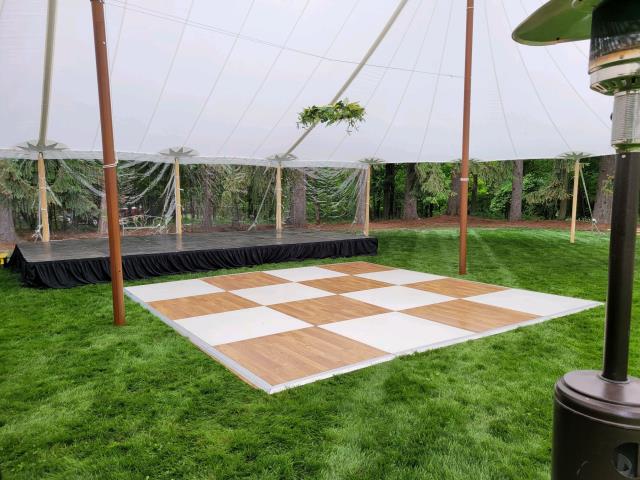Selecting the appropriate components for building a long-lasting and secure external performance surface is essential for guaranteeing an enjoyable session. Exterior movement platforms must endure various weather conditions while offering a firm foundation for dancers and attendees. Thus, it is important to evaluate factors such as material durability, safety features, and maintenance requirements when making selections. This guide will examine several appropriate options and their benefits in designing an open-air dance floor.
One popular choice for outdoor dance floors is timber. Lumber offers a traditional and warm aesthetic that many find appealing. Hardwoods like maple or ash are particularly preferred due to their strength and ability to cushion impact, which can protect dancers’ joints. Additionally, timber has inherent anti-slip qualities when treated properly, reducing the risk of injuries. However, preserving a timber dance floor requires regular sealing and resurfacing to shield it from humidity and UV damage, making it critical to account for the climate in which the floor will be installed.

Another practical option is composite materials, which blend natural fibers with plastic. These materials are engineered to be impervious to humidity, mildew, and discoloration from sunlight. Composite dance floors offer durability comparable to conventional wood without the intensive upkeep. They are less susceptible to warping and cracking than natural wood floors when subjected to extreme environmental conditions. In addition, composite surfaces often have integrated anti-slip properties, making them a safer choice for outdoor events.
For those seeking a more contemporary approach, modular tiles made of see here now PVC or rubber are excellent alternatives. These tiles are designed for easy installation and can be rearranged or swapped as required. The versatility of using interlocking tiles permits rapid setup and disassembly, making them suitable for short-term dance venues or gatherings. Moreover, these materials provide cushioning that enhances comfort while dancing and minimizes the risk of injuries caused by falls. The non-porous structure of PVC and rubber also inhibits water penetration, additionally extending the lifespan of the dance surface.
Ultimately, it is crucial to consider the site and intended use of the outdoor dance floor when choosing components. For instance, if the dance floor will be installed in a heavily used area or subjected to harsh weather regularly, opting for durable surfaces that require minimal upkeep will be essential. On the other hand, for less intense use or in more sheltered locations, lighter materials may suffice. In any case, prioritizing safety features such as traction and shock absorption should remain at the center of design.
To summarize, constructing a long-lasting and check this site out secure open-air dance floor requires thoughtful assessment of diverse materials suited for different environments and purposes. Wood offers timeless beauty but requires diligent care; engineered composites blend appearance with resilience; interlocking tiles provide versatility and convenience. Ultimately, understanding the unique requirements of the dance floor's planned use will inform material selection toward selecting the most appropriate material for an enjoyable and safe dancing experience outdoors.